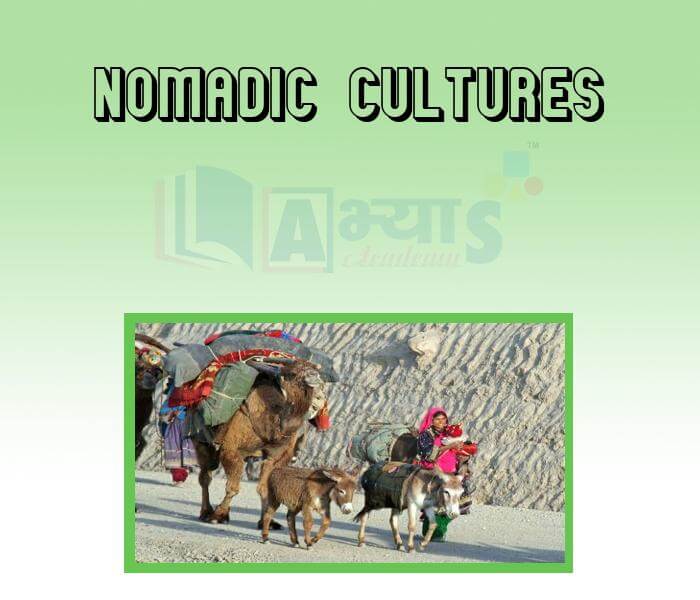Nomadic Cultures












Nomadic Cultures
How Nomads and mobile People Lived:
Changing Society: New castes and Hierarchies:
The rise of Rajput clans to the position to the position of rulers set an example for the tribal people to follow. Gradually, with the support of the Brahmans', many tribes became part of the caste system. But only the leading tribal families could join the ruling class.
Religion: The adivasis revere nature and believe that there is life in everything around them.Different tribes have different gods, some believe in a formless creator who lives in the clouds. He appears sometimes in human form in dreams. The bhils believe in bhagavan or bholo iswor, who is their superme god. Among the naga tribes, there is belief in a god who created the earth out of the waters through earthquakes. The sons of this god now watch or mankind and punish those who do wrong . other deities without name or form live in the mountain forest, river, and lakes.
Nomadic cultures: Tribes like the Banjaras and the Lambadis were nomadic. Nomadic tribes are wanderers; they travel and change settlements frequently.
Interaction and social change: Tribal economies were mostly based on subsistence agriculture or hunting and gathering. Tribal members traded with outsiders for the few necessities they lacked, such as salt and iron. So contact with the outside world was limited.
Students / Parents Reviews [10]
It has a great methodology. Students here can get analysis to their test quickly.We can learn easily through PPTs and the testing methods are good. We know that where we have to practice

Barkha Arora
10thAbout Abhyas metholodology the teachers are very nice and hardworking toward students.The Centre Head Mrs Anu Sethi is also a brilliant teacher.Abhyas has taught me how to overcome problems and has always taken my doubts and suppoeted me.

Shreya Shrivastava
8thBeing a parent, I saw my daughter improvement in her studies by seeing a good result in all day to day compititive exam TMO, NSO, IEO etc and as well as studies. I have got a fruitful result from my daughter.

Prisha Gupta
8thOne of the best institutes to develope a child interest in studies.Provides SST and English knowledge also unlike other institutes. Teachers are co operative and friendly online tests andPPT develope practical knowledge also.

Aman Kumar Shrivastava
10thIt was good as the experience because as we had come here we had been improved in a such envirnment created here.Extra is taught which is beneficial for future.

Eshan Arora
8thMy experience with Abhyas academy is very good. I did not think that my every subject coming here will be so strong. The main thing is that the online tests had made me learn here more things.

Hiya Gupta
8thAbhyas Methodology is very good. It is based on according to student and each child manages accordingly to its properly. Methodology has improved the abilities of students to shine them in future.

Manish Kumar
10thI have spent a wonderful time in Abhyas academy. It has made my reasoning more apt, English more stronger and Maths an interesting subject for me. It has given me a habbit of self studying

Yatharthi Sharma
10thA marvelous experience with Abhyas. I am glad to share that my ward has achieved more than enough at the Ambala ABHYAS centre. Years have passed on and more and more he has gained. May the centre flourish and develop day by day by the grace of God.

Archit Segal
7thMy experience was very good with Abhyas academy. I am studying here from 6th class and I am satisfied by its results in my life. I improved a lot here ahead of school syllabus.
